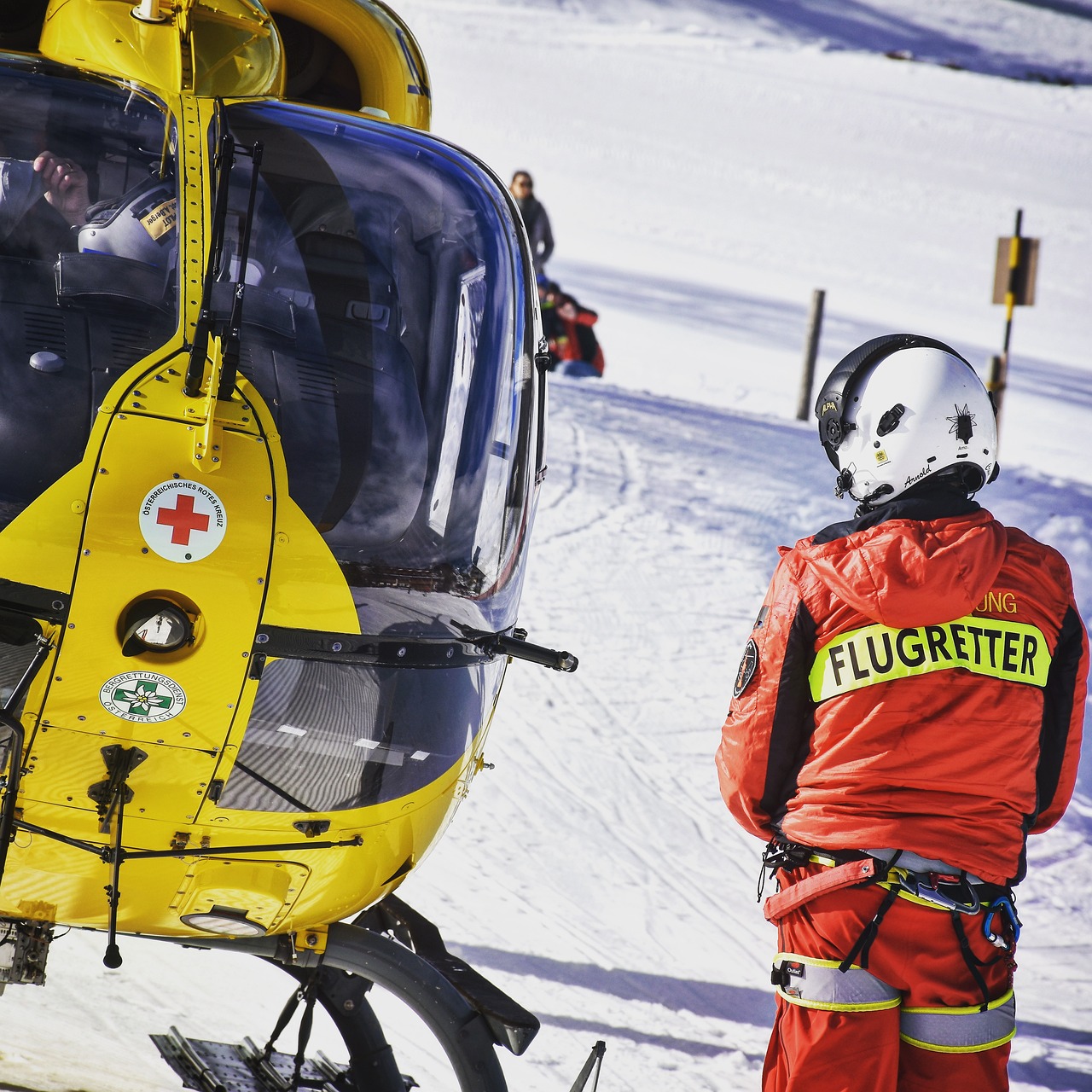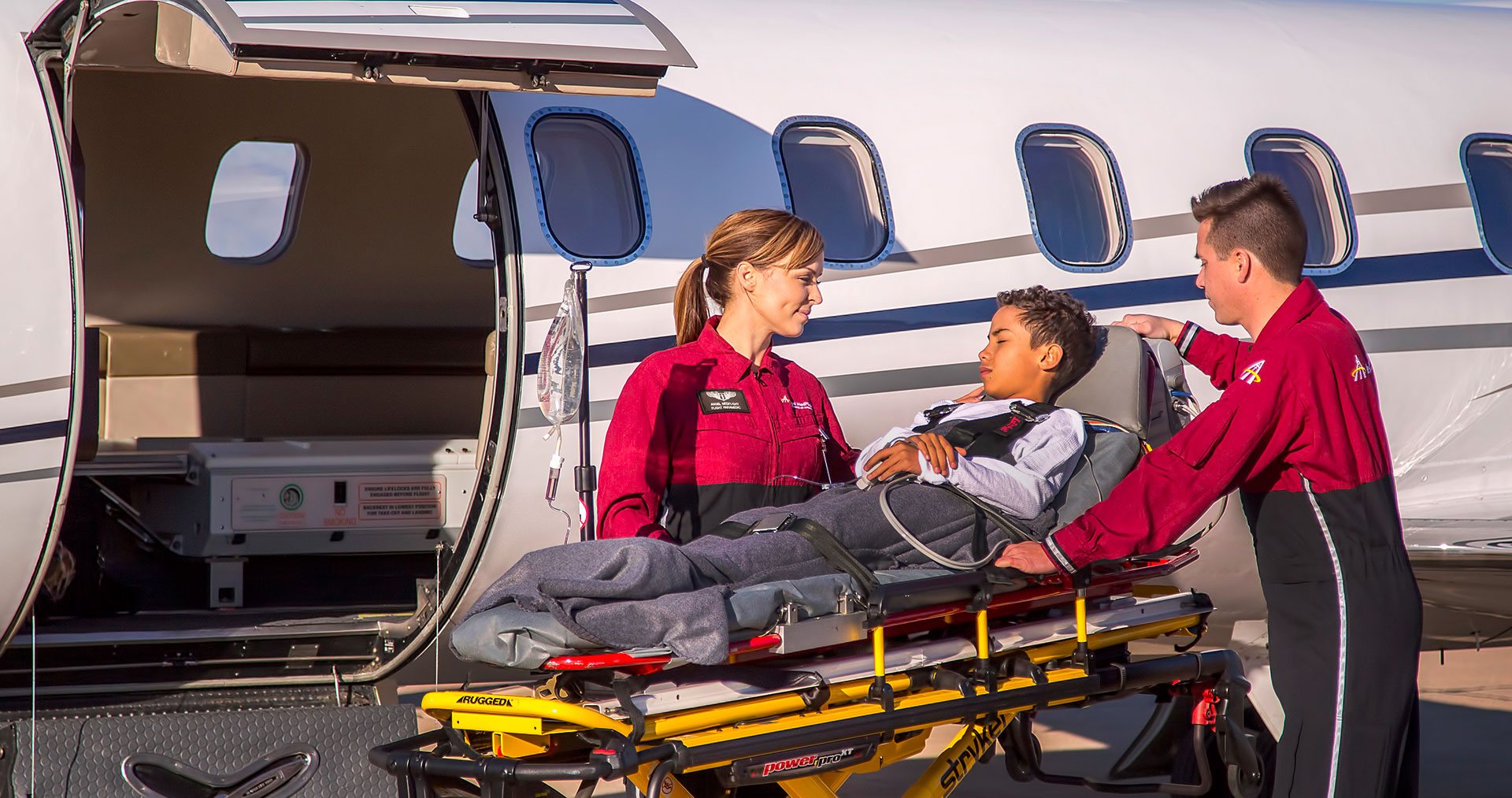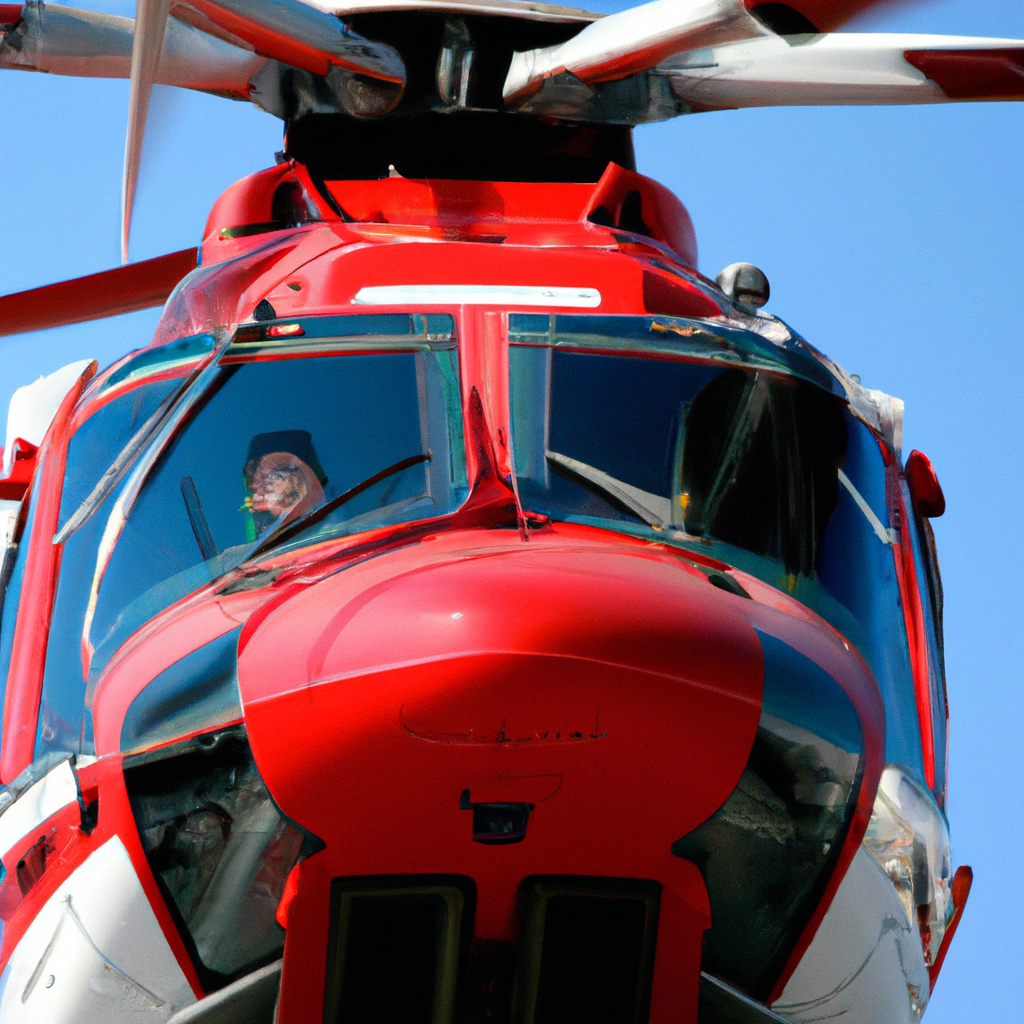So, you’re interested in becoming an air ambulance pilot? Well, you’ve come to the right place! In this article, we’re going to cover everything you need to know about the education and licensing requirements for this rewarding and challenging profession. From the specific educational qualifications you’ll need to pursue, to the necessary licenses and certifications, we’ll leave no stone unturned. Whether you’re an aspiring pilot looking to make a career change or a passionate individual wanting to make a difference in people’s lives, it’s time to strap in and get ready for an exciting journey into the world of air ambulance piloting!
Education
If you’re considering a career as an air ambulance pilot, you’ll need to complete a series of educational milestones. Let’s break down each stage to give you a clear understanding of the requirements.
High School Diploma
Education forms the foundation of any successful career, and becoming an air ambulance pilot is no exception. It all begins with obtaining a high school diploma. While this might seem like a basic requirement, it plays a crucial role in developing the necessary skills and knowledge needed for higher education and future flight training.
During your high school years, it’s advisable to focus on subjects that will lay a solid groundwork for your aviation journey. Science, particularly physics, will help you understand the fundamental principles of flight. Math will enhance your problem-solving abilities, and English will improve your communication skills – essential for a career in aviation.
To prepare for a career as an air ambulance pilot, consider taking advantage of any aviation-related programs or courses your school or local community may offer. These can provide valuable insights and experiences to help you determine if aviation is the right path for you.
Bachelor’s Degree
While a high school diploma is the minimum requirement, pursuing a bachelor’s degree can give you a competitive edge and open up additional career opportunities within the aviation industry.
Advantages of a Degree
A bachelor’s degree offers numerous advantages for aspiring air ambulance pilots. Firstly, it provides a comprehensive education that goes beyond the technical aspects of flying. This broader understanding of the world helps you become a well-rounded professional capable of making informed decisions in high-pressure situations.
Additionally, airlines and other aviation organizations often prioritize candidates with a bachelor’s degree when hiring pilots. This is because a degree demonstrates your commitment to education, discipline, and the ability to manage and complete long-term goals.
Recommended Majors
While there is no specific degree requirement for becoming an air ambulance pilot, certain majors can align well with the responsibilities and challenges of the profession. Aviation-related fields, such as Aeronautical Science or Aviation Management, offer specialized coursework that can complement your flight training.
However, it’s essential to remember that a bachelor’s degree in any field can be valuable. Many airlines consider candidates with diverse educational backgrounds, recognizing the transferable skills gained in fields like engineering, business, or even communication.
Flight School Training
Once you’ve obtained your high school diploma and, ideally, a bachelor’s degree, it’s time to pursue flight school training. This is the stage where you will gain the essential skills and knowledge needed to operate an aircraft in demanding situations.
Flight Training Schools
Choosing the right flight training school is crucial to ensure you receive quality education and proper guidance. Look for FAA-approved flight schools that have experienced instructors, a comprehensive curriculum, and a strong safety record. Conduct thorough research, read reviews, and speak with current or former students to get a clear picture of the school’s offerings and reputation.
Consider factors such as the school’s location, availability of aircraft and simulators, and the opportunity for additional certifications or ratings. Remember, flight training involves a significant investment of both time and money, so selecting a reputable school is vital for your success.
Curriculum and Training Programs
Flight school training consists of both ground school and flight training. Ground school covers a wide range of theoretical subjects, including aerodynamics, weather patterns, navigation, aviation regulations, and emergency procedures. It provides the foundational knowledge necessary for safe and competent piloting.
Flight training, on the other hand, allows you to put theory into practice by taking to the skies. You’ll learn how to handle the aircraft, perform maneuvers, communicate with air traffic control, and navigate various weather conditions. The flight training curriculum typically follows a structured progression, gradually introducing more complex scenarios as you gain experience and proficiency.
Airline Transport Pilot License
To pursue a career as an air ambulance pilot, you’ll need to obtain an Airline Transport Pilot (ATP) license. This is the highest level of pilot certification recognized by the Federal Aviation Administration (FAA) and is required for piloting airline transport aircraft.
Requirements for ATP License
To be eligible for an ATP license, you must meet the following requirements:
- Be at least 23 years old
- Hold a valid commercial pilot license
- Have accumulated at least 1,500 flight hours, including specific experience requirements
- Pass the ATP written exam
- Pass the ATP practical exam
ATP Written Exam
The ATP written exam assesses your knowledge in areas such as aircraft systems, aerodynamics, regulations, weather, and human factors. It is a comprehensive test that requires thorough preparation. Study materials, including FAA publications and test preparation guides, can help you effectively prepare for this exam.
ATP Practical Exam
The ATP practical exam, also known as the checkride, evaluates your flying skills and decision-making abilities in various scenarios. A designated FAA examiner will assess your performance during a simulated flight, testing your ability to handle emergencies, navigate, communicate, and demonstrate overall proficiency as an air ambulance pilot.
Successfully completing these requirements will earn you the highly sought-after ATP license and pave the way for a rewarding career in air ambulance services.

Federal Aviation Administration (FAA) Requirements
To become an air ambulance pilot, you must meet certain requirements set by the Federal Aviation Administration (FAA). These requirements encompass factors such as age, language proficiency, physical and mental fitness, and knowledge and skill requirements.
Minimum Age
To operate an aircraft as an air ambulance pilot, you must be at least 18 years old. However, keep in mind that the ATP license, which is necessary for piloting airline transport aircraft, requires a minimum age of 23.
English Proficiency
Since a significant portion of aviation communication occurs in English, you must demonstrate adequate English language proficiency. The ability to understand and effectively communicate in English is crucial for maintaining safe aviation operations.
Physical and Mental Fitness
Piloting an air ambulance involves handling high-stress situations and making split-second decisions. Therefore, you must meet certain physical and mental fitness standards to ensure your ability to perform your duties safely and effectively. Specific medical requirements must be met, including vision acuity, hearing, cardiovascular health, and overall mental wellness.
Knowledge and Skill Requirements
To obtain a commercial pilot license and progress towards an ATP license, you must demonstrate a certain level of knowledge and skill. This includes completion of ground school training, passing written exams, and accumulating flight hours that cover specific aeronautical experience aspects.
Meeting these FAA requirements ensures that air ambulance pilots are equipped with the necessary qualifications and capabilities to operate aircraft safely and provide critical medical transportation services.
Medical Certification
Medical certification is an essential aspect of becoming an air ambulance pilot. As a pilot responsible for transporting patients in urgent situations, you must meet certain health standards to ensure the safety and wellbeing of both yourself and those in your care.
Class 1 Medical Certificate
To operate as an air ambulance pilot, you will need to obtain a Class 1 Medical Certificate. This certificate is issued by certified aviation medical examiners and evaluates your overall health and fitness for aviation duties. It includes a thorough examination of various factors such as cardiovascular health, vision and hearing acuity, mental wellness, and any existing medical conditions that could potentially affect your ability to fly.
Medical Examiners
Aviation medical examiners are healthcare professionals specially authorized to conduct medical evaluations for pilots. They adhere to specific protocols and standards established by the FAA. It’s crucial to schedule regular medical examinations to maintain your Class 1 Medical Certificate. A lapse or loss of medical certification can have significant consequences for your career as an air ambulance pilot.
Medical Conditions and Restrictions
Certain medical conditions or medications may impose specific restrictions on your ability to serve as an air ambulance pilot. It’s important to disclose any existing medical conditions or medications to your aviation medical examiner for thorough evaluation. The FAA provides guidelines and protocols regarding these conditions to ensure the safety and welfare of both pilots and patients.
Instrument Rating
One of the key qualifications for an air ambulance pilot is an instrument rating. This allows you to fly an aircraft in adverse weather conditions or situations with reduced visibility.
Basics of Instrument Rating
An instrument rating builds upon the skills developed during your initial flight training. It focuses on teaching you how to navigate and safely control an aircraft solely by referencing the instruments in the cockpit, rather than relying on visual cues. This is crucial when flying in low visibility, such as heavy rain, fog, or clouds.
Instrument rating training covers topics such as instrument flight rules (IFR), instrument approaches, navigation aids, and advanced cockpit procedures. It also includes simulator training and flight hours practicing instrument flying techniques.
Training and Examination
To obtain an instrument rating, you’ll need to receive specialized training from a certified flight instructor who is qualified to teach instrument flying. The training includes a combination of ground school lessons and flight hours dedicated to practicing instrument flying techniques.
Once you’ve completed the required training, you’ll need to pass a practical examination conducted by an FAA-designated examiner. This examination assesses your ability to safely operate an aircraft using only instruments and correctly interpret and respond to air traffic control instructions.
Flight Experience
Building flight experience is a crucial step towards becoming a seasoned air ambulance pilot. It allows you to gain the necessary skills, knowledge, and confidence to handle various situations that arise during medical transportation missions.
Required Flight Hours
To be eligible for an ATP license, you must accumulate a minimum of 1,500 flight hours. These hours must include specific experience requirements, such as cross-country flights, night flights, instrument flights, and operating as a pilot in command.
However, it’s important to note that beyond meeting the basic requirements, the more flight experience you have, the better prepared you’ll be for the challenges of air ambulance operations. Sought-after air ambulance employers often prioritize candidates with extensive flight experience due to the critical nature of the service they provide.
Types of Flight Experience
During your flight experience journey, aim to gain a diverse range of experiences to broaden your skills and increase your marketability. Seek opportunities to fly in different aircraft types, operate in various weather conditions, and participate in mission types relevant to air ambulance operations. This can include medical evacuation flights, search and rescue missions, or disaster response operations.
Additionally, pursuing additional ratings and certificates beyond the minimum requirements can enhance your flight experience and demonstrate a commitment to ongoing professional development.
Becoming an air ambulance pilot requires a combination of education, training, and experience. It’s a challenging yet rewarding career that allows you to make a meaningful difference in people’s lives during critical times. By following the necessary steps and meeting the required licensing and medical certifications, you can embark on a fulfilling journey as an air ambulance pilot.



